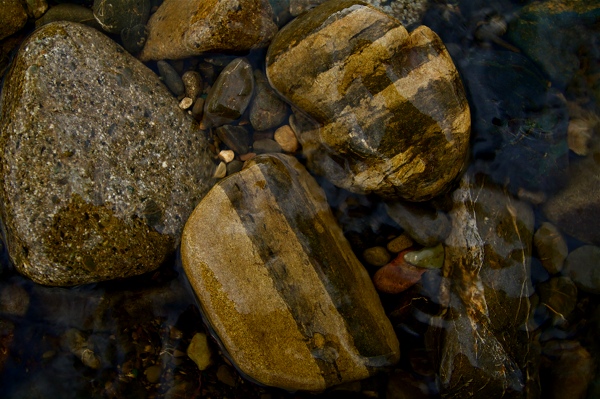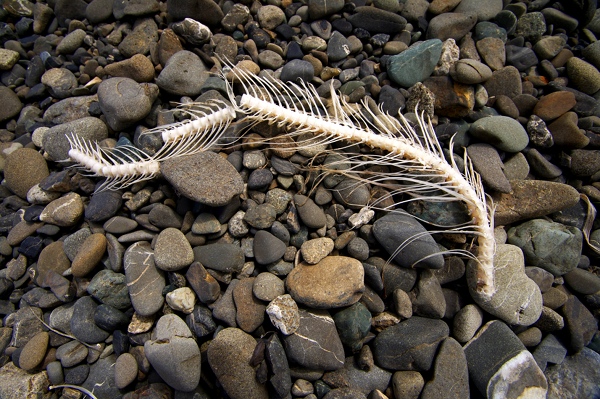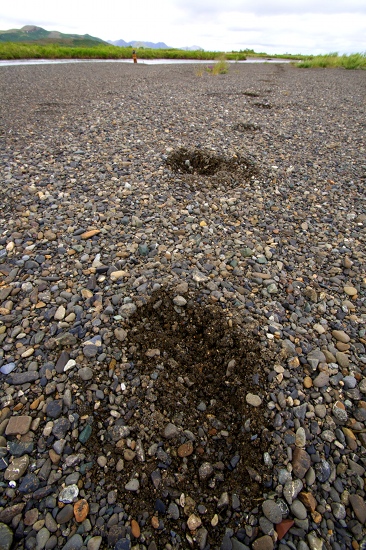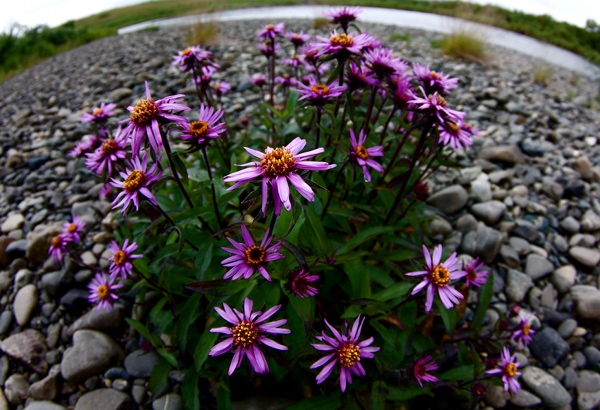Most folks fishing with me in Alaska walk on gravel all day long but never look at it. Rocks is just rocks to them.
When I walk on gravel I see a kaleidoscope of color, form, shape, texture. I feel a deep sense of geology, history, archeology, biology. In the right light the visual richness of Goodnews River gravel almost overwhelms me.
Millions, tens of millions, hundreds of millions of years ago sediments settled. Magma cooled. Volcanoes erupted. All these processes form rock. Heat and pressure change rock that’s already there.
Mountains were thrust upward by the motion of continents. Erosion wears them down. The river carries pieces of mountains towards the sea, shaping and polishing them as it goes. The river deposits the pieces in enormous piles we call gravel bars. I find pieces of mountains when I walk on those bars.
I wonder how long it takes a piece of gravel to travel from a mountain top to a riverside bar where I might find it. No one has started a gravel tagging program.
I find beautiful pieces of rock in the gravel. Unusual shapes and intrusions fascinate me. And occasionally, if you look enough, you find aboriginal artifacts.
Men have lived here in Alaska from the time of the Bering land bridge, about 12,000 years ago. Until Columbus arrived, these people lived in the stone age. Their tools and implements look much like the rest of the gravel. You have to look at a lot of rocks before you begin to notice those that are different, those that look worked.
I find a curiously hollowed out rock. Mike Gorton tells me it’s a whale oil lamp. It almost certainly predates Columbus’s arrival in the new world.
I find a stone. The working of men on one side is obvious. I take it back to camp and ask Mike what it might be. He says it’s an anchor stone, used by aborigines to anchor their skin covered boat. Thousands of years have passed since it was last used. Did the owners lose it when its tether snapped while anchored, or was it dropped, broken, and then discarded?
Footprints in the gravel indicate a large mammal has passed. Most of the time those mammals are bears. Their scat and footprints litter every gravel bar in the Goodnews River system, hundreds of miles of shoreline.
Bear scat releases nutrients into the environment that salmon have carried into the river from the Pacific Ocean. Salmon act as an enormous nutrient cycling system, although that system is nowhere near as efficient as it was before dams, logging, agriculture, mining, and commercial fishing brought Pacific salmon perilously close to being endangered.
Salmon lay their eggs in gravel. It’s astonishing how they alter the river bed, digging the holes we call redds in which to lay their eggs. On the downstream side of the redds big humps of gravel alter the current flow, and at low water nearly form hazards to navigation.
As the hen salmon drop their eggs and buck salmon their milt, dolly varden and rainbow trout dart in to partake of the bounty of eggs. Salmon develop those gnarly teeth to fight off the egg predators. Apparently they work well enough that salmon continue returning to rivers that have not been too severely altered.
As I walk on a gravel bar, looking for interesting stones, all these thoughts and others only half-formed pass through my mind. A gravel bar is so much more than just a pile of rocks.
John Kumiski
http://www.spottedtail.com/
All content in this blog, including writing and photos, copyright John Kumiski 2011. All rights are reserved.
|




Speak Your Mind